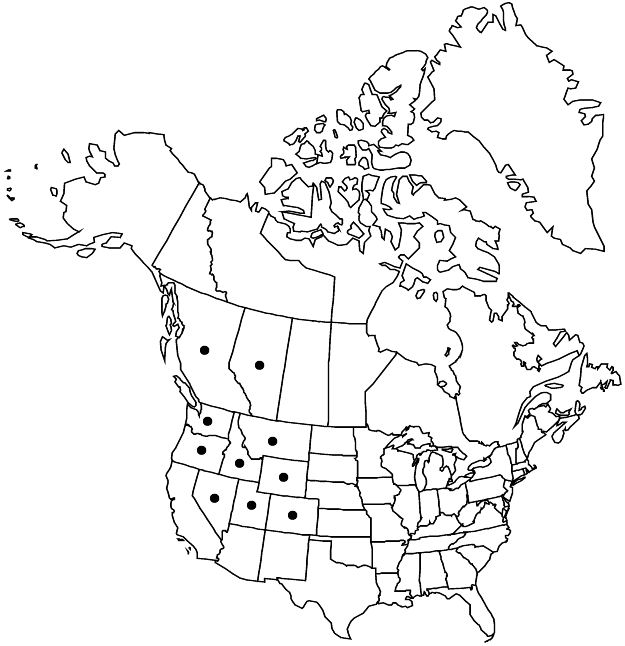Physocarpus malvaceus
Revis. Gen. Pl. 1: 219. 1891.
Shrubs, 20 dm. Stems spreading, brown becoming grayish black, glabrous or finely stellate-hairy. Leaves: stipules oblong to elliptic or obovate, 6 × 2.5 mm, base broad, apex rounded and erose to apiculate or acute; petiole 1–2.5(–3) cm; blade broadly ovate to orbiculate, 2–6 × 2.5–6 cm, sometimes wider than long, base truncate to slightly cordate, 3- or 5-lobed, clefts between lobes may be shallow to deep, margins doubly crenate to doubly serrate, apex rounded, obtuse, or acute, surfaces glabrous or sparsely stellate-hairy (more so on abaxial veins). Inflorescences 15–20-flowered, fairly dense, hemispheric racemes, 2.5–4 cm diam.; bracts narrowly obovate to spatulate, 4.5 mm, apex erose or acute. Pedicels 8–15 mm, densely stellate-hairy. Flowers 5–8 mm diam.; hypanthium campanulate, 1.5–2 mm, densely stellate-hairy; sepals triangular to ovate, 2–3 mm, apex gland-tipped, surfaces densely stellate-hairy; petals white, broadly elliptic to obovate or orbiculate, 4.5 × 4.5 mm; stamens ca. 30, equal to or slightly exceeding petals; carpels 2(3), connate at least 1/2 their lengths, densely stellate-hairy. Follicles 2(3), ovoid, flattened, 2.5 mm (lengths not exceeding sepals), keeled apically, densely stellate-hairy, hairs white; styles 2.5–3 mm. Seeds 1 or 2, pyriform, 1.5 mm.
Phenology: Flowering May–Jul; fruiting Aug.
Habitat: Rocky canyon slopes and cliffs, open grassy slopes, dry open forests among Pinus, Juniperus, Pseudotsuga, Picea, and Populus
Elevation: 500–2800 m
Distribution

Alta., B.C., Colo., Idaho, Mont., Nev., Oreg., Utah, Wash., Wyo.
Discussion
Physocarpus malvaceus deserves to be more widely cultivated.
Selected References
None.